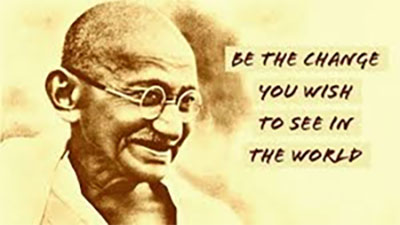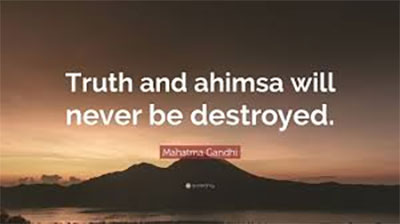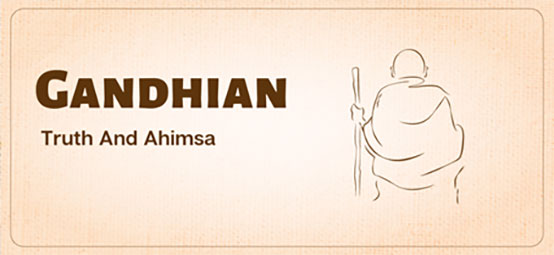– Mahatama Gandhi
We have learnt about the Indian National Movement in our school textbooks and everyone, without any exception, is well familiar with the name Mahatma Gandhi. Often revered as the Father of the Nation, sometimes referred to as Bapu, Mohandas Karamchand Gandhi was an eminent lawyer, a social activist, a writer, a leader of the Indian National Movement and a known figure in Indian history.
Born in Porbandar, Mahatma Gandhi went to South Africa to pursue higher studies and work as a legal representative. He stood up against racial discrimination and developed his political views, ethics, and leadership. He arrived in India in 1915 and organised various Satyagraha’s that emphasised the power of Truth. He launched the Non-Cooperation Movement, the Civil Disobedience Movement and finally, the Quit India movement, after which India gained Independence.
To put Gandhi’s ideas in a quick read is rather a difficult thing to do. Scholars across the world have spent their lives studying the life of Mahatma and his various ideas. Thus, it would be absurd to cramp all his ideas into this blog. My attempt here would be to mention only a few of his thoughts on Truth and Non-Violence, which are still relevant in 2022.
Gandhi, Truth, and Satyagraha:
The idea of Truth is the principle on which Mahatma laid the thrust of the methodology he referred to as “Satyagraha”, where he emphasised the need to search for Truth. For Gandhi, nothing exists but the Truth. Devotion to what is true is the only justification for a person’s existence. The general understanding of Truth only indicates that one must speak the Truth. However, the word Satya/Truth has a broader connotation for Mahatma. The Truth must be observed not only in one’s speech but also in thought and action.
Mahatma’s idea of Satyagraha, where ‘Satya’ means Truth and ‘agraha’ translates to insistence, implies following the path of Truth. It is the demonstration of the Truth that does not seek vengeance but appeals to the oppressor’s conscience to see what is true. Satyagraha is resistance, but it cannot be equated to passiveness. It is not the weapon of the weak. It is a power that only the strong have, as it demands intense activity. It neither implies any hatred nor destruction. It recognises the difference between evil and evil doers. This is a significant distinction Satyagraha recognises. It understands that the oppressor is not the enemy but only away from the Truth and can be convinced (not forced) to know the Truth.





I loved as much as you will receive carried out right here. The sketch is attractive, your authored material stylish. nonetheless, you command get got an impatience over that you wish be delivering the following. unwell unquestionably come more formerly again since exactly the same nearly a lot often inside case you shield this hike.
Your article helped me a lot, is there any more related content? Thanks!
Your article helped me a lot, is there any more related content? Thanks!